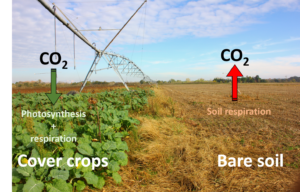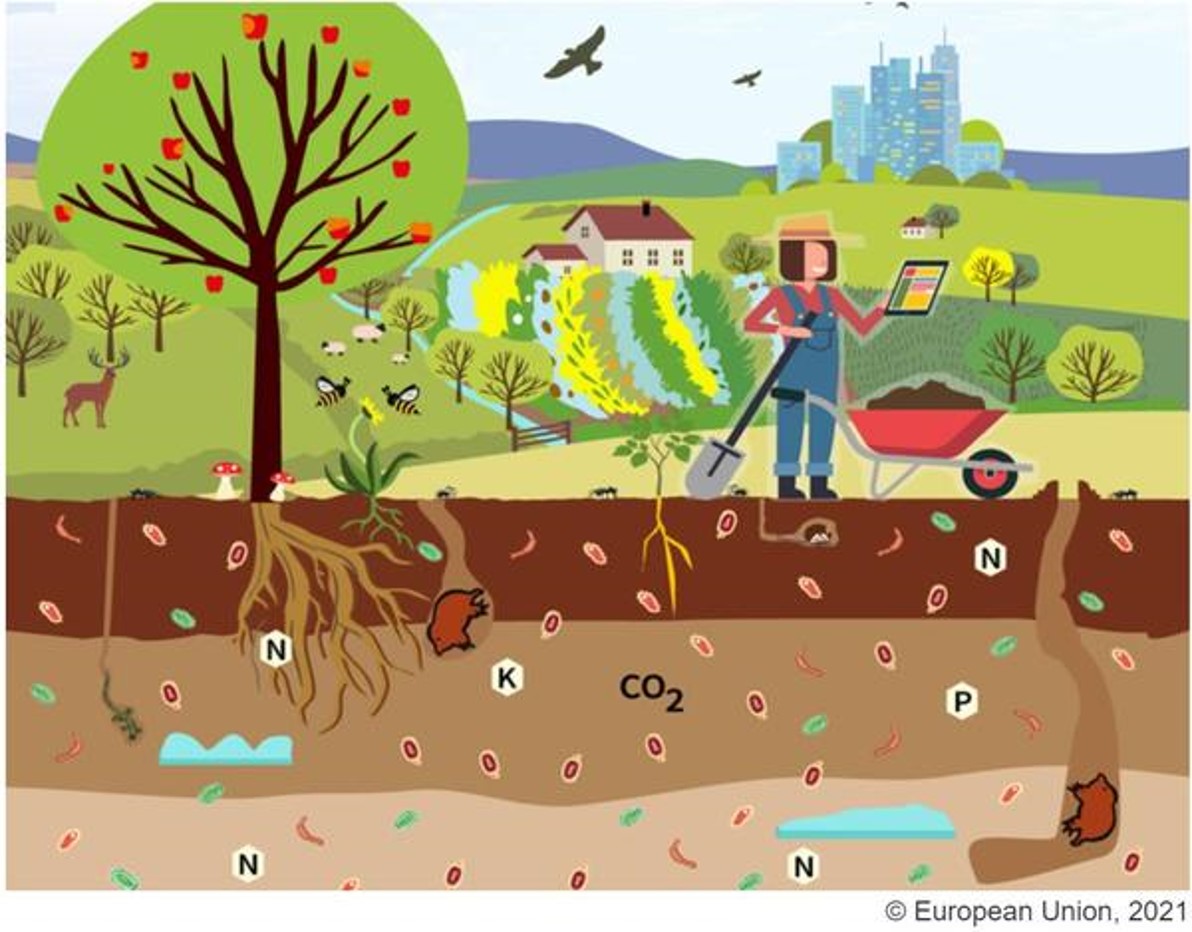Naturellement PopCorn
This project has a total budget of €7.5 million, €4.4 million is funded by the Avenir Investment Programme (PIA), managed by the General Secretariat for Investment (SGPI) and operated by Bpifrance. It will develop a single measurement tool for calculating carbon storage in soils by farmers growing cover crops. The aim is to remunerate producers for their positive impact on the environment and on the climate.
Context
Agriculture is at the heart of a multitude of societal and environmental chalenges that require it to change its posture in order to move from a conventional productivist agriculture with a food vocation to a more sustainable agriculture capable of providing a diversity of ecosystem services. By proposing the agro-ecological transition of the sector as the common thread of the project, Naturallement Popcorn is fully in line with this paradigm shift.
Also, the international initiative “4 for 1000”, launched by France at COP 21, aims to show that agriculture, and in particular agricultural soils, can play a crucial role in food security and climate change mitigation. This initiative encourages to promote or implement concrete actions on carbon storage in soils and the type of practices to achieve this (agro-ecology, agroforestry, conservation agriculture, landscape management …). Among these actions, the national expertise conducted by INRAE at the request of ADEME and of the Ministry of Higher Education and Research has highlighted that cover crops is one of the two practices with the best potential to store C in agricultural soils (the other being agroforestry). In addition, cover crops can provide many other ecosystem services (erosion control, biodiversity enhancement, water quality improvement…; Juste et al., 2013) and they also contribute to climate change mitigation by increasing surface albedo (Carrer et al., 2018).
To include agriculture in the carbon market process, developing reliable diagnostic tools applicable at large scale is necessary. Indeed, although different humic budgets tools exist, none of them completely meets the needs of the agricultural carbon market (high cost related to the need to perform extensive soil sampling, extensive famer’s management data collection, measurement accuracy…).
In this context, the Naturellement popcorn project aims to remunerate farmers according to the amount of carbon stored in the soil as organic matter through the introduction cover crops in the crop rotations. Nataïs, the European leader in Popcorn production, has been committed for several years to sustainable agriculture processes. The company encourages producers to plant cover crops with the aim of increasing carbon storage in the soil. To financially encourage this agroecological transition, a premium has been introduced. This premium guarantees an increase in the purchase price of Popcorn corn in exchange for validation of some technical criteria by farmers, promoting sustainable production. A farmer can receive up to 11€/t of popcorn maize produced if he uses agroecological levers for his maize popcorn production.
However, this premium does not consider the carbon storage associated with these practices. To complete this approach, Nataïs therefore decided to set up the development of a remuneration for the carbon sequestered in the soil by plant cover, through the ‘Naturellement Popcorn’ project. In 2019, the company started to test with a network of pilot farms this new compensation model. In 2020, the premium is determined by the quantity of biomass produced by the cover crops based on an empirical approach developped by CESBIO (cover crop aboveground biomass is diretly estimated by remote sensing). Next step will be to estimate cover crop biomass by an approach combining remote sensing and crop modelling with the SAFYE-CO2 model/AgriCarbon-EO processing chain.The long-term objective is to extend this carbon storage strategy to all the farmers in the network and to replace the industry premium with this carbon premium. This remuneration system for farmers will thus be established with carbon credits.
Cover crops (CC)
Many studies agree that reducing periods of bare soil in crop rotations can promote carbon storage (Ceschia et al., 2010), especially by introducing cover crops between main crops (Poeplau & Don, 2015; Kaye & Quemada, 2017; Pellerin et al., 2019). Indeed, cover crops fix atmospheric CO2 in their biomass through photosynthesis. Upon their destruction, carbon will therefore be incorporated in the soil, and although some of this carbon will be mineralized and re-emitted to the atmosphere in the form of CO2, a fraction will remain trapped in the soil as organic matter.

The phosynthesis of the cover crops compensates the respiration of the canopy and of the soil leading to a net carbon storage (less atmospheric CO2). Inversely, only respiration fluxes (CO2 losses) occur when the soil is kept bare between two cash crops.
Because there is currently no operational tool that can simulate large scale & plot level C budgets (on a territorial scale), the result is incomplete/inacurate diagnostics of C and GHG budgets that may lead to inefficient or even counterproductive actions. The development of multi-criteria spatialized diagnostic tools that operate at the plot level but covering large territories is therefore essential to provide the necessary assessment elements to guide changes in practices to be implemented
on field crops.
Our contribution
To achieve this, it is necessary to map first the agricultural plot status on a large scale and to reconstruct the crop rotations (e.g. to map the presence or not of cover crops). For this purpose, high spatial resolution remote sensing (e.g. Sentinel-2) data can be used as the European Land Parcel Identification System (LPIS) does not contain exhaustive/accurate data on cover crops. High spatial resolution remote sensing can be also be used to map the success of cover crop’s emergence/production and to monitor a number of biophysical parameters (vegetation index, soil moisture, albedo…) and cultural practices (irrigation, silage, tillage…). This allows to analyze, by assimilating remote sensing data in an adapted crop models (e.g. SAFYE-CO2), the functioning of the different agricultural plots of a territory, individually, in order to establish initial diagnostics and indicators of ecosystem services (yield, biomass, water and C fluxes and budgets, water use efficiencies, climate change mitigation potential…).
The SAFYE-CO2 model (Veloso 2014 ; Pique et al., 2020b) can address these needs and can also be used to test some scenarios of changes in cropping practices (e.g., export of straw or cover crops for energy purposes…) on the output variables. Within the framework of this project, the SAFYE-CO2 model imbeded in the AgriCarbon-EO processing chain will be used :
1) to calculate the crops and cover crops biomass, yields, CO2 fluxes and C budgets of the plots of the Nataïs partner farmer’s network and,
2) to evaluate more specifically the effect of cover crops on soil organic carbon storage and annual C budgets.











